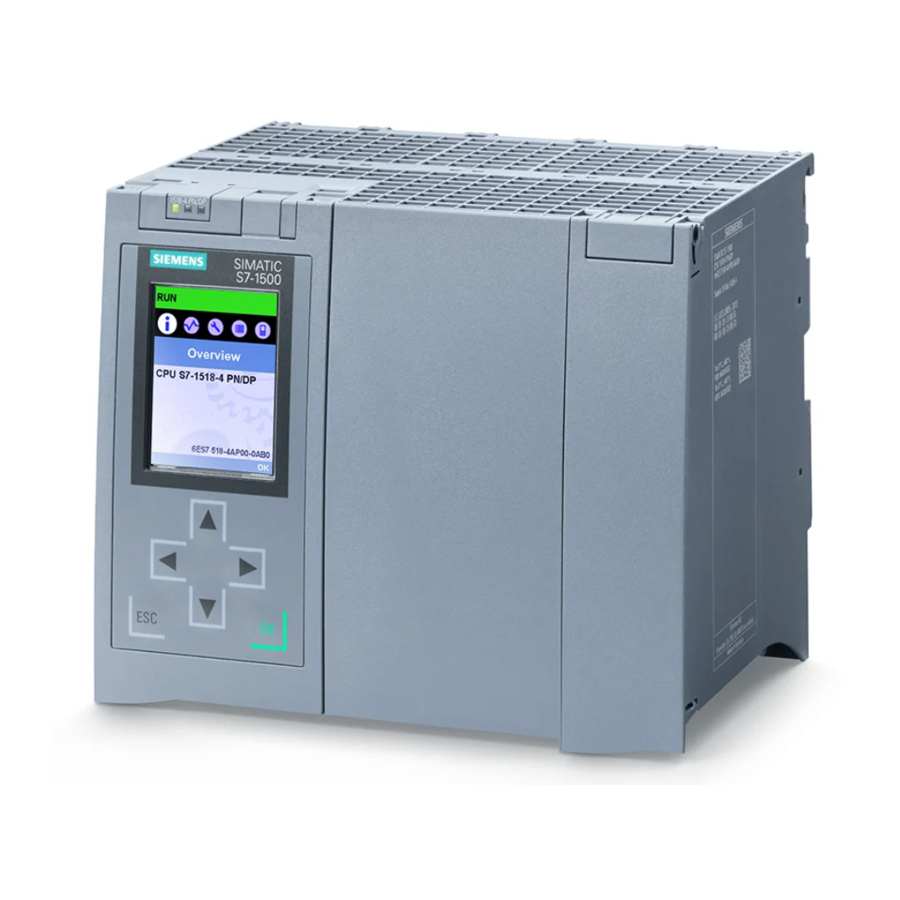
Siemens SIMATIC S7-1500 Manual
Hide thumbs
Also See for SIMATIC S7-1500:
- User manual ,
- System manual (523 pages) ,
- Function manual (402 pages)

















Need help?
Do you have a question about the SIMATIC S7-1500 and is the answer not in the manual?
Questions and answers